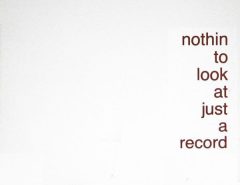Copiamos desde Neural esta reseña de un libro sobre Arqueología de medios tecnológicos. Libros como este, sumados a Audible Past que ilustra nuestro recién estrenado widget de Sound Studies, o Deep time of Media de Siegfried Zielinski, del que el autor de este libro Jussi Parikka parte, son bibliografía de base para entender la importancia de maquinas como las recientemente compradas por la BNE.
Con menos empaque teórico, pero también imprescindible, nunca nos cansaremos de recomendar Juego y Artificio, de Alfredo Aracil.
To understand the «futuristic» present we live in it’s very important to know our past. This seems particularly true when it comes to media culture. In fact it appears that the only feasible kind of time traveling is what is usually defined as «media archaeology», which allows us to re-create and use the same mediations on content that have been used by people in the past, refashioning their specific media context. This book discusses Media Archaeology as an important field in a number of disciplines, studying the preservation and history of (new) media art from different angles. Parikka’s interest in logically connecting different “worlds” – such as the oft-cited “Steampunk” aesthetic – introduces a methodology for understanding the present through examining the past, exploring the death of certain media, archiving and various artistic techniques. One of the most interesting chapters is «imaginary media» which discusses the emergence of many important ideas (such as anachronism), with a technical analysis of specific characteristics. There are quite a number of artworks discussed along the line, especially in chapter 7. Is it the case that «fascination with old media technologies can help understand the new and the emerging digital culture», as the author states? Definitively yes, although maybe «fascination» can be replaced with «focused interest», something that may trigger the building of accessible collections/archives of tools and content, as has successfully been experienced in other domains of culture.




Leave a Reply
Lo siento, debes estar conectado para publicar un comentario.